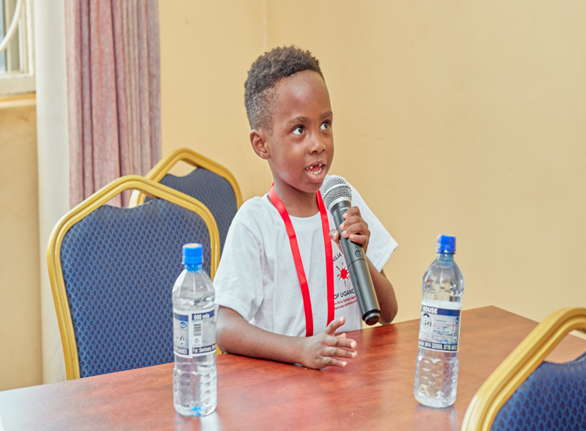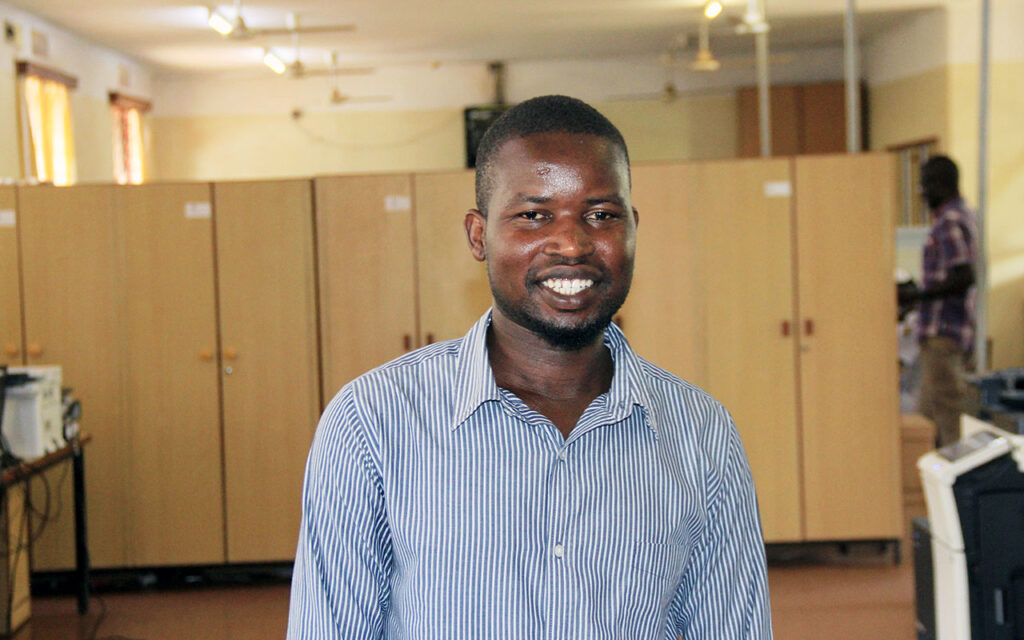Sticker charts, school trips and severe haemophilia A — Debbie’s story (part 2)
Learning to treat her son Jamie* (*a pseudonym) prophylactically after his diagnosis with severe haemophilia A was a major step for Debbie* and her partner. Moving on from using a port to treating him intravenously gave even more of a sense of control, and the confidence that Jamie had the protection he needed.
Now 14 years old, Jamie has been able to treat himself for several years.

Owning haemophilia
Debbie was keen to empower Jamie to take control of his haemophilia from a young age. She and her partner take a very practical approach to managing day-to-day life with Jamie’s haemophilia, and it seemed logical for him to really ‘own’ his condition.
“He first put the needle in himself when he was about five,” says Debbie. “At the end of the day, we said to him, ‘This is your condition, you have to learn how to deal with it.’”
Though very young when he started learning to self-treat, being introduced to the idea of working towards something special – whether a treat or being able to go on a school trip independently – was all the encouragement Jamie needed.
“As long as. He had the numbing cream and a sticker chart and a prize at the end he was completely fine!” says Debbie. “Every five times he did it, he’d get a little prize. Then, when he got to the top of his sticker chart he’d get a big prize – we’d go to the toy shop and choose what he wanted, but he wasn’t allowed to do that until he got to the top. So, he had his incentives – but school trips was the big one.”
Treatment on a school trip
When Jamie was 11, he went on the first school trip that took him away from home for several nights. Debbie. had developed good relationships with the teachers and other staff involved in Jamie’s care at school, and Jamie was able to self-treat – but she was, naturally, anxious.
“He wouldn’t always remember to prime the needle,” Debbie explains. “I’d be like, ‘Is there air in that line?’ and he’d go, ‘Oh yeah, sorry mum’. It was just things like that.”
Before the trip went ahead, Debbie arranged for Jamie to treat himself at school with the teacher watching. She wrote a list and talked her through the process, with reminders to make sure he washed his hands and placed things on a sterile tray. But what really helped Debbie’s worries was a small but effective touch that kept her involved, despite being at a distance.
“When he was actually on the school trip, the teacher would Facetime me every morning when he did his treatment,” says Debbie. “It was brilliant – made all the different. I would have been worried, just because he wouldn’t always remember things.”
Teenage haemophilia
Fast forward a few years, and Jamie continues to live well with his haemophilia. He treats prophylactically twice a week, though is due to switch to a once-weekly treatment soon. Although he occasionally has bleeds as a result of accidents or knocks in PE lessons, Debbie takes a pragmatic approach to this.
“He doesn’t do rugby, but it’s good for him to participate in PE,” she says. “He’s had bleeds in his ankles from being hit in dodgeball, but it’s just one of those things – he could have tripped off the kerb and done it.”
Being a relaxed teenager, along with taking his haemophilia as just part of life, sometimes means Jamie doesn’t treat bleeds as quickly as he should.
“He waits for three days before telling me, ‘Oh, by the way, I did this on Monday. It’s been hurting for a few days but now it’s really swollen,’” says Debbie. “Yes, it’s partly a teenage boy thing, but you know, he’s got a really high pain threshold and having haemophilia probably contributes to that.”
“I think he forgets,” she continues. “He’s just like, ‘It hurts but I’ll just get on with it,’ and it’s not until it becomes visible or hurts a lot more that he thinks to say anything.”
Positive change
Debbie thinks that Jamie has really benefitted from ongoing developments in haemophilia treatment. Around two years ago he switched from 48-hour prophylaxis to treating twice weekly, and he’s due to switch again to a treatment that he’ll only need to have once a week.
Debbie has minor concerns about the prompting Jamie will need to remember to treat himself just once a week but thinks there are benefits for both him and the family as a whole. She reflects on how changes and improvements in his treatment have changed family holidays and given her more confidence in Jamie’s safety.
“We didn’t go on holiday abroad until after he had the port removed because I was too scared about him getting an infection,” she explains. “After that, we’ve only been to France and Tenerife, and done the same holidays every year because I’ve been too scared to go anywhere else. We always go somewhere that’s got a main hospital.”
Debbie continues: “Now Jamie is starting his new factor, we’re looking at going to a Greek island because we feel safe enough to do that. The new treatment means I feel safer about travelling more because I know his levels aren’t going to drop as low, so he’s got less chance of having a serious bleed.”
Flashing ports
For Debbie, Jamie’s new treatment potentially brings with it the opportunity for him to live an even more ‘normal’ life. However, the idea of haemophilia just being a part of normal life is something that she has always encouraged with him. Post-diagnosis, she was keen to connect with other families who had children with haemophilia.
“We met the first family at a hospital Christmas party when Jamie was about four,” she says. “We swapped numbers because the kids were playing together, met up a few times over the years, and then joined the Local Families group as well. I just thought it would be nice for my son to know other kids with haemophilia.”
Debbie laughs when remembering the first group picnic they went to. “The kids were all flashing their ports at each other and comparing the sizes of them! It was just so lovely for that to be such a normal thing,” she says.
Being able to speak with other parents about her experiences was helpful, but Debbie says what made the greatest difference to how she felt was seeing Jamie enjoying time with children who shared his condition.
“It made me feel better knowing that he had other people –knowing my child was happy made me happy. I needed that for him,” she explains. “Those picnics and activity days are where the children can be natural and normal. They’re just all children playing together and a bunch of mum and dads sitting around watching them.”
Doctors must never forget
Debbie says that family life with Jamie’s haemophilia is manageable and that she doesn’t worry too much about it. What started as a scary time has become their new normal, and she’s keen for other newly diagnosed families to know that support is out there, whether through treatment centres or the experiences of other parents and families.
She hopes, though, that recognition and basic knowledge of bleeding disorders will improve among GPs and other non-specialist medical professionals. It’s for that reason that she was willing for Jamie to be a ‘case’ in student doctor exams when he was still very young, newly diagnosed, and had handprint bruises.
“I felt we were giving something back,” she says. “When children first present with haemophilia, if a doctor orders the right test, the parents and that child might not have to go through all the stress of being accused of abusing their child. They need to know there is another reason for bruising – it’s not just leukaemia and it’s not just abuse. There’s a blood test they can order to rule things out.”
Debbie continues: “Out of four student doctors who saw Jamie, only one ordered the right test,” she says. “And she started to say ‘haemophilia’ but couldn’t say it right. My then seven-year-old daughter was with us, and she turned around and said to her, ‘You mean HAEM–O-PHILIA!’ and this student doctor gave the biggest grin. Those four student doctors will never forget haemophilia!”
With our thanks to Debbie for sharing her story with us.
You can read the first part of her story here.
Further information
A number of patient organisations and charities provide support and advocacy for people with bleeding disorders and their families. In the UK these include:
- The Haemophilia Society
- Haemophilia Scotland
- Haemophilia Wales
- Haemophilia Northern Ireland
- Local families with bleeding disorders
Further reading
Debbie’s story is part of a series about the parents of children with bleeding disorders. This also includes stories about the experiences of the parents of two boys with severe haemophilia A, a mother whose daughter has Type 3 von Willebrand disease, and a family with three daughters who have Type 2A Von Willebrand disease.
About the author
Kathryn Jenner is Communications and Community Manager at Haemnet Ltd.


